
Alpamayo Circuit: The Jewel of the Andes
Explore the Alpamayo Circuit in Peru, a spectacular trek through the Andes with breathtaking mountain views, pristine lakes, and vibrant local culture.
The Alpamayo Circuit in Peru is a hidden gem in the heart of the Andes, offering some of the world's most breathtaking mountain scenery. This challenging trek encircles the stunning Alpamayo peak, renowned for its perfect, pyramid-like shape. As you traverse the circuit, you'll be treated to panoramic views of snow-capped mountains, pristine glacial lakes, and lush valleys dotted with wildflowers. The trek typically spans 8 to 12 days, depending on your pace and route variations. It takes you through remote Andean villages where you can experience the local Quechua culture and hospitality. You'll hike past traditional stone houses and terraced fields, offering a glimpse into the timeless way of life in these high-altitude communities. The Alpamayo Circuit is not for the faint-hearted. The high altitude and rugged terrain require good physical fitness and acclimatization. However, the rewards are unparalleled. Each day brings new landscapes and unforgettable moments, from crossing high mountain passes to camping under a canopy of stars. This trek is a true adventure for those seeking to connect with nature in one of the planet's most stunning settings.
Local tips in Alpamayo Circuit
- Acclimatize in Huaraz before starting the trek to avoid altitude sickness.
- Hire a local guide for a safer and more informative experience.
- Pack layers of clothing as temperatures can vary greatly throughout the day.
- Bring water purification tablets; natural water sources are abundant but not always safe to drink.
- Carry a portable charger as electricity is scarce on the trail.
Alpamayo Circuit: The Jewel of the Andes
The Alpamayo Circuit in Peru is a hidden gem in the heart of the Andes, offering some of the world's most breathtaking mountain scenery. This challenging trek encircles the stunning Alpamayo peak, renowned for its perfect, pyramid-like shape. As you traverse the circuit, you'll be treated to panoramic views of snow-capped mountains, pristine glacial lakes, and lush valleys dotted with wildflowers. The trek typically spans 8 to 12 days, depending on your pace and route variations. It takes you through remote Andean villages where you can experience the local Quechua culture and hospitality. You'll hike past traditional stone houses and terraced fields, offering a glimpse into the timeless way of life in these high-altitude communities. The Alpamayo Circuit is not for the faint-hearted. The high altitude and rugged terrain require good physical fitness and acclimatization. However, the rewards are unparalleled. Each day brings new landscapes and unforgettable moments, from crossing high mountain passes to camping under a canopy of stars. This trek is a true adventure for those seeking to connect with nature in one of the planet's most stunning settings.
When is the best time to go to Alpamayo Circuit?
Iconic landmarks you can’t miss
Alpamayo
Discover the breathtaking beauty of Alpamayo, Peru's iconic mountain peak known for its stunning landscapes and adventurous trekking opportunities.

Peruvian Mountains Trek Climb
Explore the breathtaking beauty and vibrant culture of the Peruvian Mountains through unforgettable treks and climbs.

Nevado Alpamayo
Explore Nevado Alpamayo, a breathtaking glacier in the heart of the Peruvian Andes, renowned for its stunning beauty and adventure opportunities.

Unmissable attractions to see
Alpamayo
Discover the stunning beauty of Alpamayo, a breathtaking peak in Peru's Cordillera Blanca, perfect for adventure and nature lovers alike.
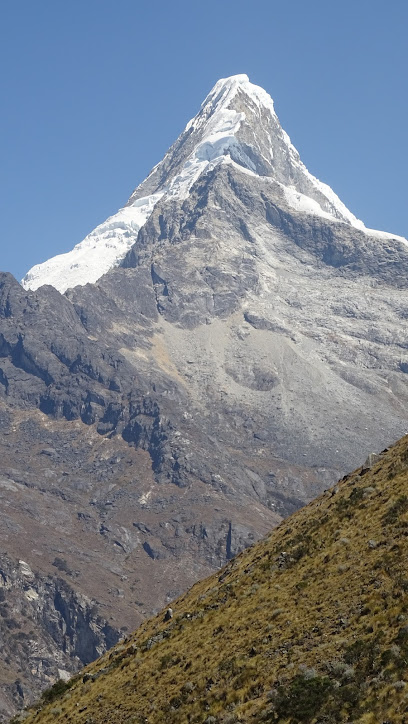
Nevado Alpamayo
Discover the breathtaking beauty of Nevado Alpamayo in the Peruvian Andes, a must-see for adventure enthusiasts and nature lovers alike.

Trek Santa Cruz
Experience the breathtaking beauty of Trek Santa Cruz, a premier hiking destination in the Peruvian Andes, where adventure meets stunning landscapes.

Laguna Cullicocha
Discover the serene landscapes and breathtaking beauty of Laguna Cullicocha, a premier hiking area in the heart of the Peruvian Andes.
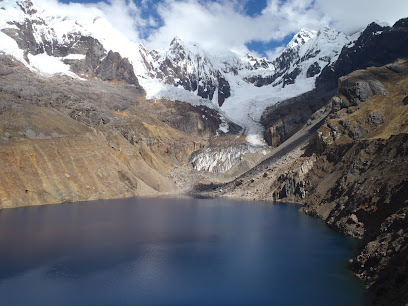
Essential places to dine
Restaurant Huaca Pucllana
Discover authentic Peruvian cuisine at Restaurant Huaca Pucllana with breathtaking views of ancient ruins in Lima.

Don Cuy
Experience the essence of Peru at Don Cuy in Huaraz – where authentic flavors meet exceptional service.

Casa Tambo Restaurant
Experience authentic Peruvian cuisine at Casa Tambo Restaurant in Lima—where tradition meets taste in a vibrant atmosphere.

Cafe Andino
Discover the rich flavors of Peru at Cafe Andino in Huaraz – where exceptional coffee meets traditional cuisine.

ALPAMAYO CASA HOTEL - RESTAURANTE
Discover authentic Peruvian cuisine at Alpamayo Casa Hotel - Restaurante in Yungay, where comfort meets breathtaking mountain views.

Chilli Heaven
Discover the vibrant flavors of India at Chilli Heaven, an unmissable restaurant nestled in the beautiful city of Huaraz, Peru.

Inti House
Discover authentic Peruvian flavors at Inti House in Aguas Calientes – your gateway to culinary delights near Machu Picchu.
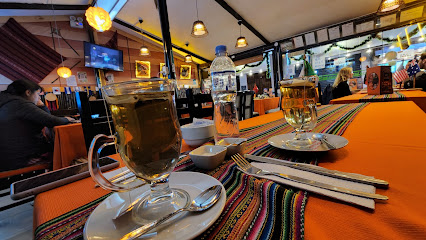
Green House
Experience authentic Peruvian organic cuisine at Green House in Aguas Calientes near Machu Picchu - where freshness meets flavor.

Hacienda Huayoccari
Experience authentic Peruvian cuisine amidst breathtaking landscapes at Hacienda Huayoccari in Huycho.

El museo de la papa rest
Experience authentic Peruvian cuisine at El Museo de la Papa in Urubamba – where every dish celebrates the beloved potato.

Hotel Mirador Alpamayo Huaraz (Con Cochera)
Experience breathtaking mountain views at Hotel Mirador Alpamayo in Huaraz - your gateway to adventure in Peru's stunning Andes.

The Lazy Dog Inn
Discover comfort and adventure at The Lazy Dog Inn, your gateway to exploring Huaraz's breathtaking landscapes and rich culture.

Alpamayo
Discover Alpamayo: A stunning peak in Peru's Andes offering breathtaking views and unforgettable trekking experiences amidst nature's splendor.

Hotel Alpamayo
Experience comfort and local charm at Hotel Alpamayo in Huaraz – your gateway to adventure amidst breathtaking mountain scenery.

Andes Lodge Peru
Experience comfort and adventure at Andes Lodge Peru - your perfect escape in the majestic Andes mountains.

Markets, malls and hidden boutiques
Larcomar
Discover Larcomar, Lima's premier shopping destination overlooking the Pacific Ocean, where luxury meets local charm in a stunning coastal setting.

Real Plaza Salaverry
Explore the ultimate shopping experience at Real Plaza Salaverry, featuring a diverse selection of stores, dining, and entertainment in the heart of Jesús María.

Jockey Plaza
Explore Jockey Plaza, Santiago de Surco's premier shopping mall featuring diverse shops, dining, and family-friendly entertainment.

Miraflores Indian Market
Immerse yourself in the colorful world of the Miraflores Indian Market, where authentic Peruvian crafts and local culture come alive.
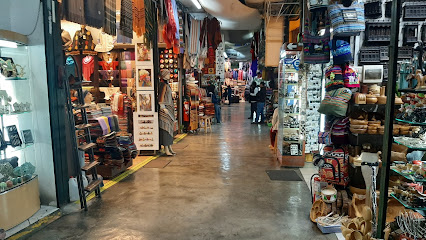
Mundo Alpaca
Explore the vibrant world of alpaca textiles at Mundo Alpaca, a cultural hub in Arequipa that blends shopping with rich Peruvian heritage.

Sodimac - Chimbote
Explore Sodimac - Chimbote for quality home goods and DIY supplies, offering a unique shopping experience for tourists and locals alike.

Andes Camping Mountain Shop
Explore the Andes with confidence—gear up at Andes Camping Mountain Shop, your one-stop shop for adventure equipment and travel services in Huaraz.

KUNA Larco
Discover the elegance of Peruvian fashion at KUNA Larco, where luxurious textiles meet contemporary style in the heart of Miraflores.

All Alpaca
Discover the elegance of Peruvian craftsmanship at All Alpaca, your go-to clothing store for luxurious alpaca garments and unique accessories.

Alpamayo
Discover the breathtaking beauty of Alpamayo, Peru's iconic mountain peak, and experience thrilling treks amidst stunning Andean landscapes.
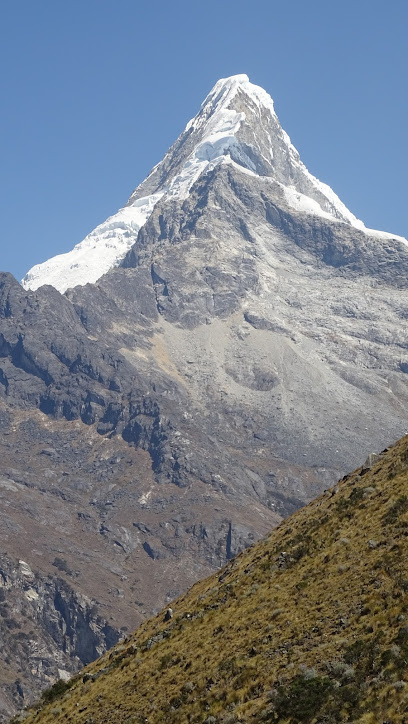
EKEKOS SAN BLAS -art & COLORS
Discover the vibrant artistry of Peru at EKEKOS SAN BLAS, a unique handicraft shop and art gallery in the heart of Cusco.

Hotel Alpamayo
Experience comfort and hospitality at Hotel Alpamayo, your gateway to the stunning landscapes of Huaraz, Peru.

ALPAMAYO TRAVEL PERU (operador turístico & trekking tours))
Discover the beauty of the Andes with Alpamayo Travel Peru – your trusted partner for trekking tours and unforgettable adventures.

Jancapampa
Discover the vibrant flavors of Peru at Jancapampa, a charming grocery store offering fresh produce and local delicacies.
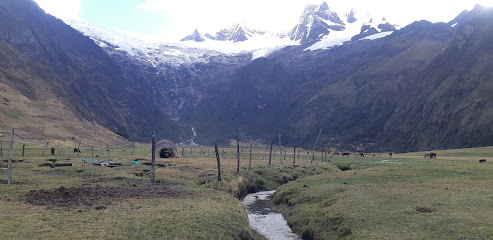
Pisac Pachamama Joyas
Explore Pisac Pachamama Joyas, where Andean artistry meets exquisite jewelry in the heart of Peru's vibrant Pisac market.

Essential bars & hidden hideouts
La chupiteria the shot bar
Dive into the vibrant nightlife of Cusco at La Chupiteria, a premier shot bar offering a unique drinking experience with local flavors.

Cafe Andino
Explore the authentic flavors of Huaraz at Cafe Andino, where every meal is a celebration of local Peruvian cuisine and coffee delights.
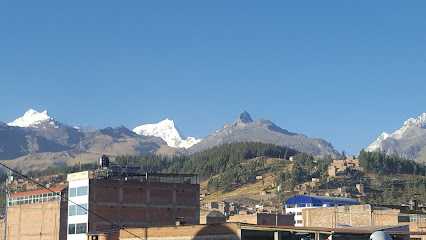
ALPAMAYO CASA HOTEL - RESTAURANTE
Savor the Essence of Peruvian Cuisine at Alpamayo Casa Hotel - Restaurante in Yungay, a Culinary Haven Surrounded by Nature's Beauty.

Pumarinri Amazon Lodge
Discover the enchanting Pumarinri Amazon Lodge, a perfect blend of adventure and comfort in the heart of the Amazon rainforest.

Cordillera Blanca Lodge
Discover the beauty and adventure of the Andes at Cordillera Blanca Lodge, your mountain retreat in Huaraz, Peru.

Hotel El Patio de Monterrey
Immerse yourself in Peruvian culture at Hotel El Patio de Monterrey, your perfect retreat for comfort and exploration.

HOTEL ALPAMAYO HUARAZ GUEST HOUSE
Discover comfort and adventure at Hotel Alpamayo Huaraz, the ideal base for exploring the majestic Andes.

Hotel Mirador Alpamayo Huaraz (Con Cochera)
Experience the breathtaking beauty of Huaraz while enjoying comfortable accommodations at Hotel Mirador Alpamayo, your perfect mountain getaway.
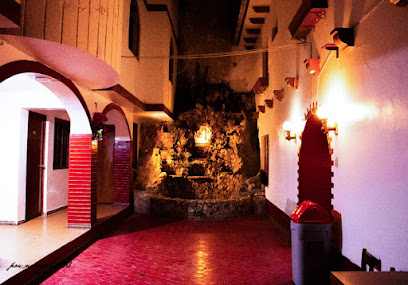
Churup Mountain Lodge
Discover the serene beauty of Churup Mountain Lodge in Huaraz, a perfect retreat for nature lovers and adventure seekers alike.

Alpamayo
Discover the breathtaking beauty of Alpamayo, the iconic pyramid peak of the Peruvian Andes, ideal for adventurers and nature lovers.

Hotel Alpamayo
Discover the serene hospitality of Hotel Alpamayo, your gateway to the majestic Andes in Huaraz, Peru.

Montañero Hostel
Experience the perfect blend of comfort and adventure at Montañero Hostel in Huaraz, your gateway to the breathtaking Andes.

Andes Lodge Peru
Discover the tranquility of the Andes at Andes Lodge Peru, where comfort meets adventure in a picturesque setting.

El Alquimista Rooftop Bar
Experience breathtaking views and vibrant nightlife at El Alquimista Rooftop Bar in Huaraz, where expertly crafted cocktails meet stunning mountain scenery.

Pukayaku Lodge
Discover a tranquil escape at Pukayaku Lodge, surrounded by the stunning beauty of Caraz, Peru; your gateway to Andes adventure.

Local Phrases about Alpamayo Circuit
-
- HelloHola
[OH-la] - GoodbyeAdiós
[AH-dee-ohs] - YesSí
[SEE] - NoNo
[NO] - Please/You're welcomePor favor/De nada
[Por fah-VOR/Day NAH-dah] - Thank youGracias
[GRAH-syas] - Excuse me/SorryDisculpe/Lo siento
[Dees-KOOL-pe/low SYEN-toh] - How are you?¿Cómo estás?
[KOH-moh es-TAHS?] - Fine. And you?Bien. ¿Y tú?
[BYEN. ee too?] - Do you speak English?¿Hablas inglés?
[AH-blahs een-GLEHS?] - I don't understandNo entiendo
[NO en-tee-EN-doh]
- HelloHola
-
- I'd like to see the menu, pleaseMe gustaría ver el menú, por favor
[May goo-stah-REE-ah ver el MAY-noo, por fah-VOR] - I don't eat meatNo como carne
[NO KOH-moh KAR-neh] - Cheers!¡Salud!
[Sah-LOOD] - I would like to pay, pleaseMe gustaría pagar, por favor
[May goo-stah-REE-ah pah-GAR, por fah-VOR]
- I'd like to see the menu, pleaseMe gustaría ver el menú, por favor
-
- Help!¡Ayuda!
[ah-YOO-dah] - Go away!¡Vete!
[VEH-teh] - Call the Police!¡Llama a la Policía!
[YAH-mah ah lah poh-LEE-see-ah] - Call a doctor!¡Llama a un doctor!
[YAH-mah ah oon dohk-TOHR] - I'm lostEstoy perdido
[es-TOY pehr-DEE-doh] - I'm illEstoy enfermo
[es-TOY en-FEHR-moh]
- Help!¡Ayuda!
-
- I'd like to buy...Me gustaría comprar...
[May goo-stah-REE-ah kohm-PRAR...] - I'm just lookingSolo estoy mirando
[SOH-loh es-TOY mee-RAN-doh] - How much is it?¿Cuánto cuesta?
[KWAHN-toh KWEHS-tah?] - That's too expensiveEs demasiado caro
[Es deh-mah-SYA-do KAH-roh] - Can you lower the price?¿Puedes bajar el precio?
[PWEH-des BAH-har el PREH-syoh?]
- I'd like to buy...Me gustaría comprar...
-
- What time is it?¿Qué hora es?
[keh OH-rah es?] - It's one o'clockEs la una
[es lah OO-nah] - Half past (10)Son las diez y media
[sohn lahss dee-EHS ee ME-dyah] - MorningMañana
[mah-NYAH-nah] - AfternoonTarde
[TAHR-deh] - EveningNoche
[NOH-cheh] - YesterdayAyer
[ah-YEHR] - TodayHoy
[HOY] - TomorrowMañana
[mah-NYAH-nah] - 1Uno
[OO-noh] - 2Dos
[dohss] - 3Tres
[trehs] - 4Cuatro
[KWAH-troh] - 5Cinco
[SEEN-koh] - 6Seis
[says] - 7Siete
[SYE-teh] - 8Ocho
[OH-choh] - 9Nueve
[NWEH-veh] - 10Diez
[dee-EHS]
- What time is it?¿Qué hora es?
-
- Where's a/the...?¿Dónde está...?
[DOHN-deh es-TAH...?] - What's the address?¿Cuál es la dirección?
[KWAHL es lah dee-rehk-SYOHN?] - Can you show me (on the map)?¿Puedes mostrarme (en el mapa)?
[PWEH-des mohs-TRAHR-meh (en el MAH-pah)?] - When's the next (bus)?¿Cuándo es el próximo (autobús)?
[KWAHN-doh es el PROH-ksee-moh (ow-toh-BOOS)?] - A ticket (to ....)Un boleto (a ...)
[oon boh-LEH-toh (ah ...)]
- Where's a/the...?¿Dónde está...?
History of Alpamayo Circuit
-
The Alpamayo Circuit lies within the Cordillera Blanca, a region that was historically influenced by the Inca Empire. The Incas, known for their advanced engineering and agricultural techniques, left remnants of their civilization throughout the Andes. Evidence of pre-Columbian cultures can be found in the form of ancient trails and ruins that dot the landscape, hinting at a vibrant past long before the arrival of Spanish conquistadors.
-
Alpamayo, often referred to as the most beautiful mountain in the world, was officially named and documented by the German explorer, Günter Oskar Dyhrenfurth, in 1936. The name 'Alpamayo' is derived from the Quechua words 'Allpa' (earth) and 'Mayu' (river), reflecting the mountain’s majestic presence in the Andean terrain. The mountain's unique, pyramid-like shape has captivated mountaineers and explorers ever since.
-
The first recorded ascent of Alpamayo was achieved in 1957 by a German expedition led by Günter Hauser. This historic climb marked a significant milestone in mountaineering, as climbers navigated the challenging and technical routes that Alpamayo presented. The successful ascent paved the way for future expeditions and established Alpamayo as a premier destination for experienced climbers.
-
The Alpamayo Circuit is part of the Cordillera Blanca mountain range, which was designated as Huascarán National Park in 1975. This protected area covers over 340,000 hectares and is home to diverse flora and fauna, as well as numerous glacial lakes and peaks. The park's establishment aimed to preserve the natural beauty and biodiversity of the region, making it a key focal point for conservation efforts in Peru.
-
The Alpamayo Circuit holds immense cultural significance for the indigenous Quechua communities that inhabit the region. Traditional practices, such as farming and weaving, are integral to their way of life. Festivals and rituals often incorporate elements of their ancestral connection to the land and mountains, highlighting the deep-rooted cultural heritage that continues to thrive in the shadow of Alpamayo.
-
Over the past few decades, the Alpamayo Circuit has become a popular destination for trekkers and adventure tourists. This influx of visitors has had a significant economic impact on local communities, providing income through guided tours, lodging, and other services. However, the rise in tourism also necessitates sustainable practices to ensure the preservation of the region’s natural and cultural resources for future generations.
Alpamayo Circuit Essentials
-
The Alpamayo Circuit is located in the Cordillera Blanca region of Peru. The closest major city is Huaraz, which can be reached by bus from Lima, the capital of Peru. The bus journey from Lima to Huaraz takes approximately 8 hours. Alternatively, you can fly from Lima to Anta Airport, which is about an hour's drive from Huaraz. From Huaraz, you will need to arrange transportation to the trailhead at Cashapampa, which is roughly a 3-hour drive.
-
In Huaraz, you can find multiple options for transportation, including taxis and minibuses. For reaching the trailhead at Cashapampa, it is advisable to hire a private taxi or arrange for a transfer through a local trekking agency. Public transportation options are limited and may not be reliable. Once on the Alpamayo Circuit, expect to travel on foot as the terrain is rugged and remote.
-
The official currency in Peru is the Peruvian Sol (PEN). While credit cards are accepted in many hotels and restaurants in Huaraz, it is essential to carry cash for smaller establishments and when trekking. ATMs are available in Huaraz, but it is wise to withdraw enough cash before heading into the mountains. Ensure you have small denominations for easier transactions.
-
The Alpamayo Circuit is generally safe for tourists, but it is crucial to take standard precautions. Be cautious of your belongings, especially in crowded areas like bus stations. Avoid walking alone at night in unfamiliar places. While Huaraz is relatively safe, exercise caution in more remote areas. Always trek with a group or a guide, as the remote terrain can be challenging and unpredictable.
-
In case of an emergency, dial the local emergency number 105 for police assistance and 116 for medical emergencies. It is highly advisable to have travel insurance that covers medical evacuation. For minor health issues, pharmacies are available in Huaraz. When trekking, always carry a basic first aid kit and be aware of the nearest evacuation points. Satellite phones or GPS devices can be useful for communication in remote areas.
-
Fashion: Do wear appropriate hiking gear, including sturdy boots and weather-appropriate clothing. Avoid flashy clothing and accessories. Religion: Do respect local customs and traditions, especially in rural areas and small villages. Public Transport: Do be respectful and patient when using local transportation. Don't expect Western standards of punctuality. Greetings: Do greet locals with a friendly 'Buenos días' or 'Buenas tardes'. A handshake is common. Eating & Drinking: Do try local dishes and be respectful of food offerings. Don't drink tap water; always use bottled or purified water.
-
To experience the Alpamayo Circuit like a local, consider hiring a local guide who can provide insights into the region's culture and history. Visit local markets in Huaraz to buy fresh produce and traditional goods. Engage with locals to learn about their way of life and traditions. Take advantage of acclimatization hikes around Huaraz before starting the Alpamayo Circuit to better prepare for the altitude. Additionally, try local delicacies such as 'pachamanca' and 'cuy' to fully immerse yourself in the culinary culture of the area.
Nearby Cities to Alpamayo Circuit
-
Things To Do in Trujillo
-
Things To Do in Chiclayo
-
Things To Do in Lima
-
Things To Do in Huancayo
-
Things To Do in Piura
-
Things To Do in Loja
-
Things To Do in Ayacucho
-
Things To Do in Ica
-
Things To Do in Cuenca
-
Things To Do in Macas
-
Things To Do in Machu Picchu
-
Things To Do in Iquitos
-
Things To Do in Guayaquil
-
Things To Do in Cusco
-
Things To Do in Salinas








